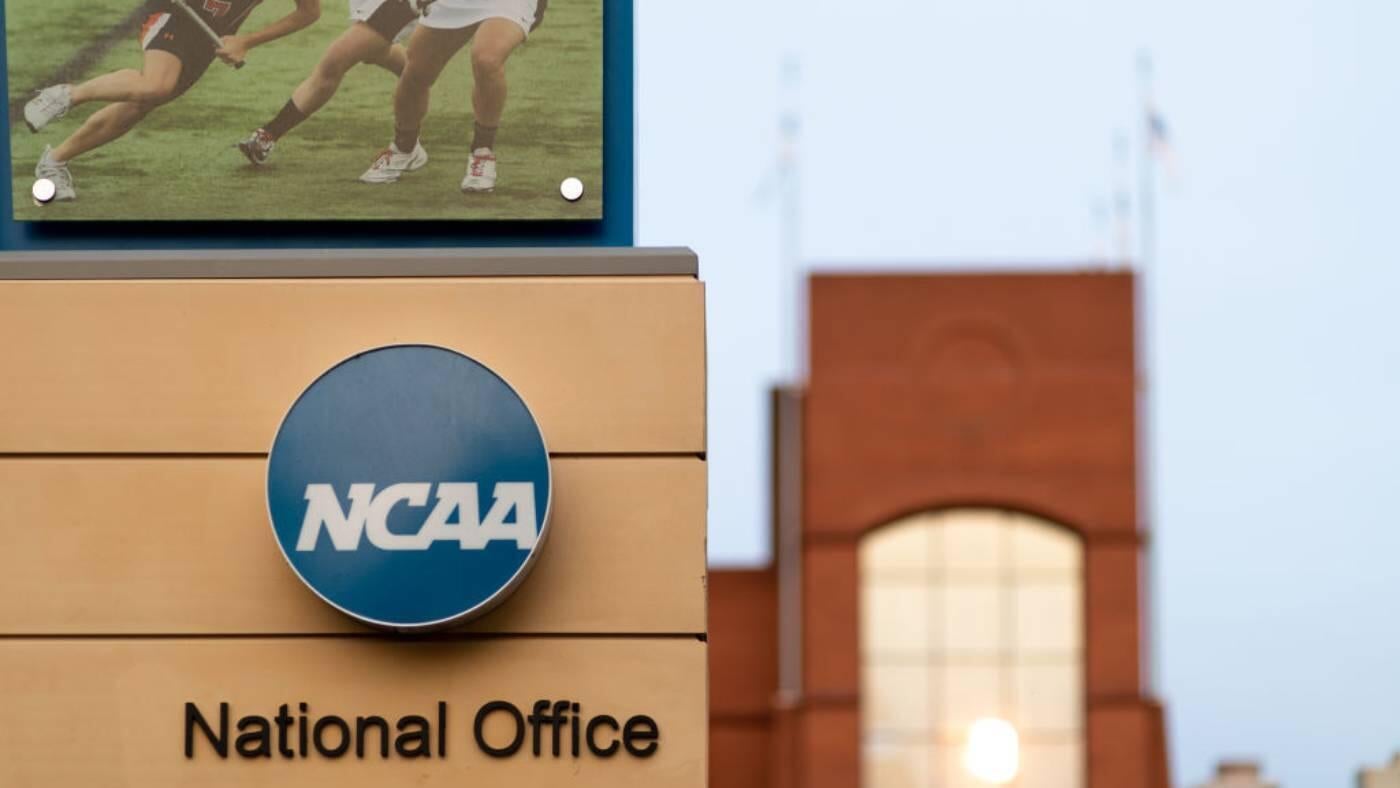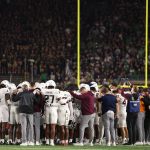
NCAA approves single transfer portal window: How the new rule will impact college football
College football’s transfer portal season just got much shorter.
The NCAA Administrative Committee on Wednesday adopted a proposal to eliminate the spring transfer portal window, moving away from the previous two-window system that allowed players to submit their names in the portal over 30 days across the winter and spring.
It eliminates post-spring movement in the sport, a popular option that more than 1,000 FBS players took advantage of this year.
“I desperately think one window is better,” Nebraska coach Matt Rhule told CBS Sports. “Basketball has one window. So it’s not like we’re the first sport to do it. We’re just making ourselves whole like the other sports.”
Said a FBS general manager: “Having to retain your roster twice a year was ridiculous.”
Initially the proposal from the FBS oversight committee had the winter portal window opening on Jan. 2 and closing Jan. 11. However, the oversight committee will continue to discuss the timing and length of the new winter window based on student-athlete feedback. A final decision on the length and timing of the winter window is expected in October.
Let’s dive into what you need to know from this change, including the winners and losers of the shift after talking with sources across the country about the new rules.
College Football QB Power Rankings: Texas A&M’s Marcel Reed, Georgia Tech’s Haynes King surge in top 50
David Cobb
How the new portal system will work The mechanics of the portal remain the same for undergraduates. Players just have a smaller window with which to make their decision to stay or go.
Initially, players essentially could enter the portal at any time. Then the NCAA adopted transfer windows in August of 2022, limiting players to 45 days in the winter and 15 days in May with which to enter the portal. From there the number of days continued to shrink from 45 to 30.
Under the initial proposal of the new system, the portal was expected to open on Jan. 2 and close on Jan. 11. The timing and lenght of that window is now up for continued debate. As before, players only have to submit their names in the portal within those windows. They can take as long as needed to decide on what school they’ll attend next.
Like the previous system, there will be an exemption for players who participate in the postseason, per an NCAA spokesperson.
Given that the College Football Playoff semifinals (Jan. 8 and Jan. 9) along with the national title game (Jan. 19) could take place within or after that proposed 10-day window, players on those teams are expected to have an additional five days time following the end of their season with which to enter.
There is expected to be a considerable shift in the rules for post-graduate transfers under proposed new system. Previously, graduate transfers — either those who’ve earned their degree or would by the conclusion of the semester — were allowed to enter the portal beginning Oct. 1.
Under the proposed system the oversight committee initially approved, graduate transfers will enter the portal at the same time as undergraduates.
There is one major exception to those windows, however: When a school undergoes a head coaching change, a 30-day immediate transfer window is triggered. It’s already happened twice this year with UCLA and Virginia Tech firing their head coaches following Week 3 of the season.
With robust movement expected in the coaching carousel this year, you could still see considerable pre-January transfer activity in the portal from players whose schools have made a coaching change.
Winner: Coaching staffs
The change to college football’s transfer window structure comes a little over nine months after FBS coaches at the American Football Coaches Convention unanimously voted to back a single January portal window.
A shift to a single window in January will be a welcome change to most coaches and recruiting staffers. The collision in recent years of a December portal window, a December signing day, postseason preparation and wide-scale roster negotiations caused a logistical nightmare for those in the sport.
“It adds some regulation to the Wild, Wild West,” a FBS GM told CBS Sports.
It was particularly difficult for teams involved in College Football Playoff prep. Last year the winter portal window ran from Dec. 9-28. The first round of playoff games occurred on Dec. 20 and 21. That meant teams in the playoff had to juggle roster retention, a signing period, portal visits AND playoff prep.
It put players in a tough spot, too. Both Penn State and SMU saw their backup quarterbacks enter the portal ahead of their 2024 playoff runs. SMU’s Preston Stone stayed with the Mustangs through the playoff before transferring to Northwestern. But Penn State lost Beau Pribula, a contributor for the team as a change-of-pace option for starter Drew Allar, to the portal for its run to the semifinals.
“It’s a lot,” Stone told CBS Sports last year. “It’s really hectic.
Not all head coaches are thrilled with the change, however. Ohio State’s Ryan Day pushed back on the idea of an early January window, saying it hurts playoff teams.
“I don’t think it’s a good idea at all,” Day said in his Week 3 media availability. “In the conversations that we had with the Big Ten coaches, I think the majority of them agree. I just don’t quite understand how teams that are playing in the playoffs are expected to make the decisions and sign their upcoming players while they’re still getting ready to play for games. It doesn’t make any sense to me.”
The single window also puts teams with late NFL draft declaration deadlines into a bit of a bind. Some players don’t decide until their seasons are over, and that can be well after the portal window closes for those teams that play in the national title game. If a player unexpectedly enters the draft following the title game, teams will have no way to replace them in the portal.
There’s also more pressure placed on teams with this model. As one general manager told CBS: “You can’t miss.” There’s no opportunity to dip back in the portal in the spring to replace a transfer who didn’t live up to expectations or nab a veteran to take the spot of a young player who didn’t develop as expected during spring ball.
More mistakes will be made by teams, and the successful programs in this era of the portal are the ones that evaluate their own roster best. There’s a time crunch in January and it’ll reward the teams that are the most prepared.
Loser: PlayersSimply, this rule change further restricts player movement in college football.
The NCAA will provide stats that a significant majority of player movement in the portal happens within the first few days of a transfer window opening. But the reality is players could have considerably fewer days with which to enter the portal.
Restricting transfer movement in the spring is a boon for most teams in terms of their roster management. It also prevents players from renegotiating twice a year and dangling the portal as leverage as has become commonplace in this era.
But the lack of a spring option hurts players who are unhappy with their place on the depth chart during spring practice or those who want to graduate first in the spring before moving on to their next school. Now, players who planned to leave after earning their degree in the spring will have to navigate a sticky transfer credit environment to ensure they’ll be eligible at their next school. And some programs won’t be willing to keep a player on scholarship who wants to graduate before moving on following the spring.
It’s understandable that the NCAA and its members would want to throttle player movement after a record-setting 4,000-plus FBS players entered the portal during the 2024-25 cycle. But it could also lead to lawsuits.
A big reason why the elimination of the spring portal window was tabled last year is because the NCAA member schools were afraid a lawsuit could occur over limiting player agency and earning potential. And a loss in court could set the stage for the NCAA to lose its right to restrict player movement in any capacity.
It’ll be interesting to see if the move to a single transfer window triggers legal action. Given the way college athletics has functioned over the last decade, it’s a safe bet something will occur.
A few other notes from the changes Given the lack of a spring window, don’t be surprised if you see players submit their name in the portal just in case to create optionality during the spring semester. We’ve seen similar maneuvers over the years — Arizona CB Tacario Davis did so after Jedd Fisch left for Washington last January but remained with the program through the 2024 season — and it could become far more common as players look to create leverage and optionality. Though, only high-level players will have the type of cachet to get away with doing so.This shift is a boon for Group of Six and FCS programs whose rosters are pillaged during the spring window as Power Four teams would often look to their rosters late to add depth.This change is a huge win for new head coaches. Previously, they had to focus on roster retention and portal evaluation at the same time, often within just a few days of taking a new job. Now, they’ll have time to set their staff, evaluate their roster and target needs in the portal before the window opens in January. Though, those new staffs will certainly miss to improve their roster in the spring once they get to see their returning players go through 15 practices. Expect to see an uptick in player portal announcements and tampering in December. Those already happened at a high rate. But players and schools aren’t going to wait to test the waters with agents serving as go-betweens. There will be very few portal surprises once the window opens. Most of those names will have already leaked by that point. Said one Power Four Director of Player Personnel: “The tampering is going to be egregious.” This era of the transfer portal will move fast. Most schools begin the winter semester in mid-January, meaning players will have only a week or two to take visits and make decisions if the initial timeline of Jan. 2-11 holds after the oversight committee’s revisions. The portal was already speed dating. But now the fast forward button has been hit a few times. Schools that begin classes later in the spring could have a big advantage compared to those who start classes earlier in the month.The single transfer window could be a boon for JUCO players who graduate in May. JUCO recruiting has taken a huge downturn since the advent of the portal. But May junior college grads will now be the only players available to add during the spring.Just because there’s one portal window doesn’t mean players won’t find a way to transfer outside of it. Jake Retzlaff and Xavier Lucas before him created a path to transfer outside the portal that at least some players — those who can receive big rev share or NIL checks to do so — will follow.










